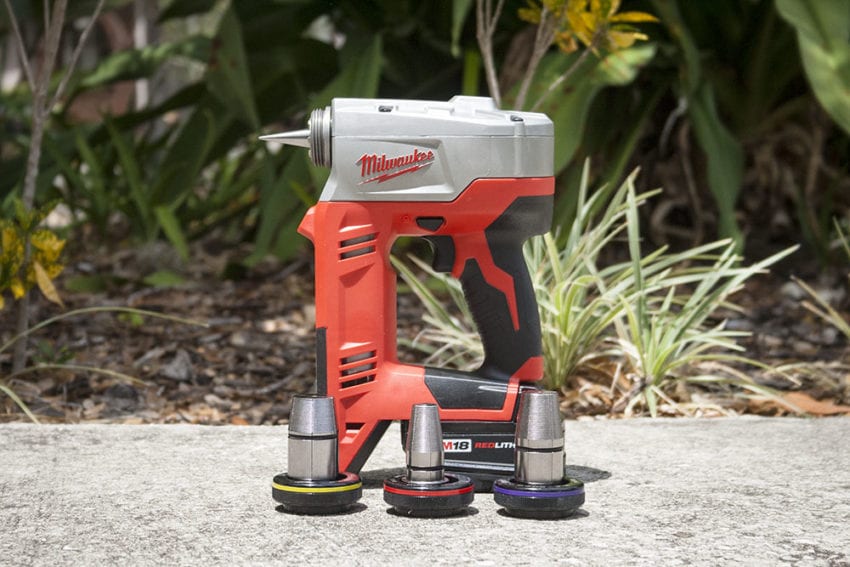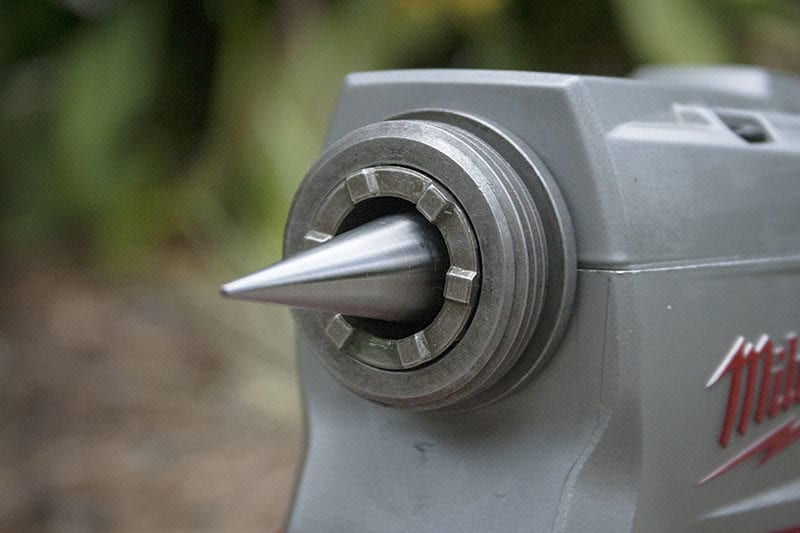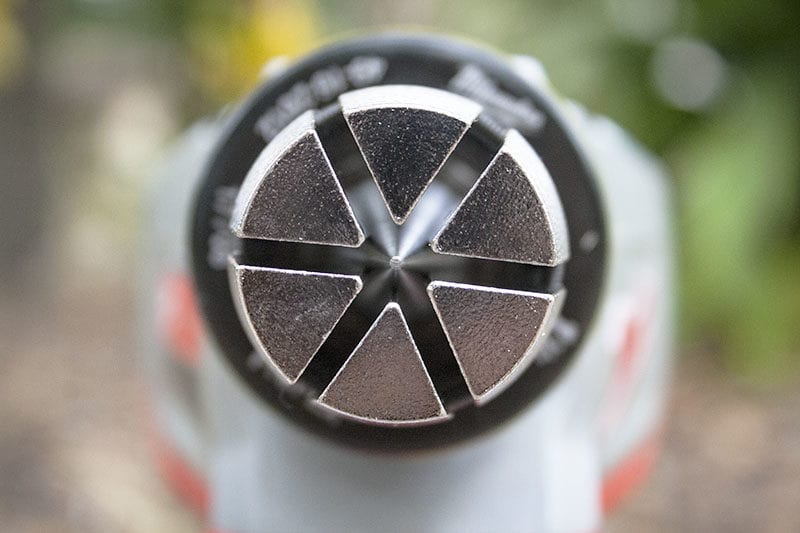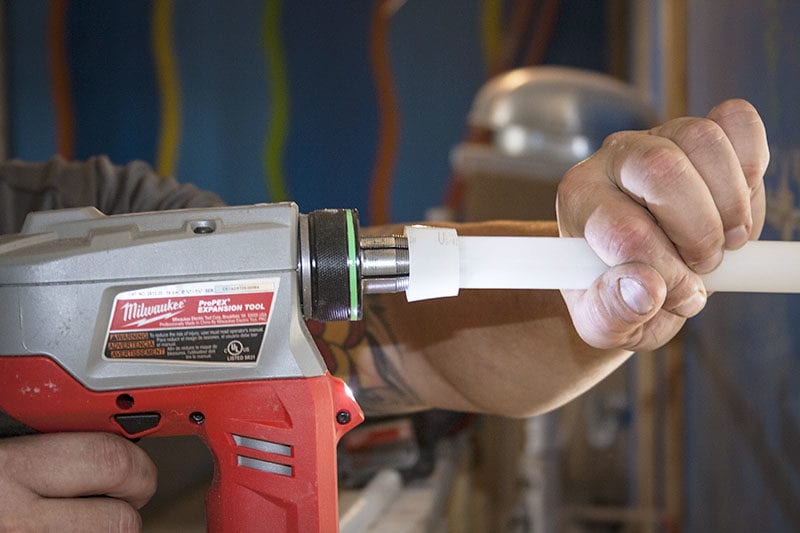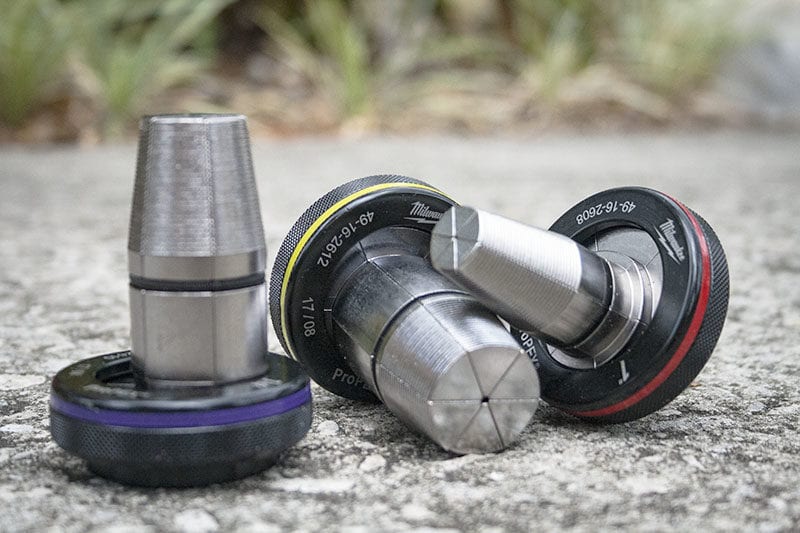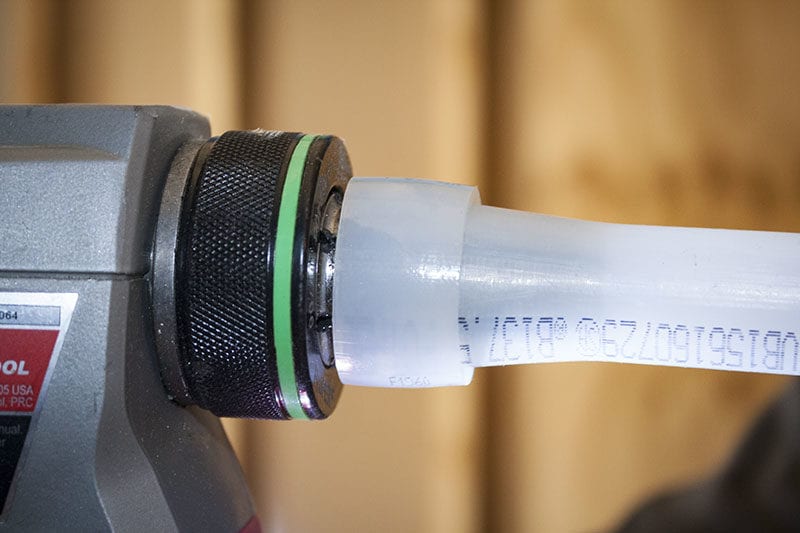Since California certified PEX tubing for residential plumbing applications in 2009, contractors and plumbers across the country have been quick to adopt it. PEX’s commercial applications were initially fire systems and radiant floors, but now it’s even common to use it for re-pipes. Although it’s not the perfect material, it offers some significant advantages over traditional copper or PVC piping. The Milwaukee M18 Pro Pex Expansion Tool (2632-20) significantly simplifies the installation process on this material.
PEX is easier and quicker to install because it’s flexible, requires fewer fittings, is non-corrosive, is less expensive than copper, and can be combined with nearly any existing plumbing system. It eliminates water hammer, resists freezing temperatures, and doesn’t require primer, glue, or a torch for installation. However, it can’t remain exposed to UV light and can’t be buried directly in the ground. But those drawbacks haven’t slowed PEX installation which requires a unique style of tool.
How the Milwaukee 2632-20 Works
If you don’t see this PEX expansion tool in motion, it won’t be clear how it accomplishes its work. PEX tubing’s elasticity is the property that makes the primer-less, glueless, and torch-less PEX connections possible. By temporarily expanding the end of the tubing with the expander and inserting a fitting, the tubing naturally attempts to return to its previous shape, creating a tight seal around the fitting.
Pulling the trigger of the Milwaukee 2632-20 M18 Pro Pex Expansion Tool reveals the secret – a cone-shaped piece pushes forward, causing the chrome-plated segments to open and expand. Just as quickly as the segments open, they close again. A quick cam makes about an eighth turn of the head, repeating the cone-shaped piece’s motion and subsequent segment expansion that provides a uniform expansion of the end of the tube.
Milwaukee M18 Pro Pex Expansion Tool First Impressions
This is Milwaukee’s middle-sized expansion tool that accepts heads for 3/8- to 1-1/2-inch tubing, although the kit only comes with heads for 1- to 1-1/2-inch with the smaller sizes requiring separate purchases (bummer). Its D-handle frame is magnesium, which is helpful as the bare tool is already over 7 pounds and with the battery (before expansion head) is over 9 pounds. So it’s not the lightest tool you’ll pick up! The Milwaukee 2632-20 Pr PEX tool’s metal gears should keep this tool going for a while. We also like the added safety and work light.
PEXing Some Muscle
I’ve been working on a tenant build-out of a nail salon in a strip mall – a great place to review this tool since there are so many connections. There are several manual PEX expansion tools on the market but if you’re looking for battery-powered expansion, Milwaukee’s tools are the only game in town. The company teamed up with PEX manufacturer Uponor to create this line of expansion tools. There’s really no comparison in performance between Milwaukee’s tools and manual tools. There’s really no comparison in price, either. Suffice it to say for now that whatever sticker shock you might have will be assuaged by the time and effort savings of the Milwaukee M18 ProPex Expansion Tool.
Battery vs Manual PEX Expansion
As you might imagine, wrestling a long-handled manual expander is a pain in the neck. But once you grasp the comfortable rubber overmold of the ProPex, you’ll certainly never want to go back. It’s contoured up and under the main tool body to cushion the area between your thumb and index finger. The comfortable grip is necessary since, as I mentioned, this tool has some heft.
The weight isn’t as much of a challenge in new construction where you have plenty of room to move around. But getting in a cabinet to use a heavy tool can be problematic. If you expand the tubing but don’t get to the fitting inserted in the 4-ish second window or – worse yet – if you only get it partially inserted when the tube closes around it, you could have a big headache. You might not have enough tubing left to cut and start over.
Since the clock starts immediately after the expansion ends, you have to be prepared. Many times you find yourself expanding the tube and quickly tossing the tool aside to get the fitting in the pipe in time. If you’re contorted in an awkward position with a heavy tool, it gets challenging. So the weight becomes more of a factor for repipes and remodels.
Pro Tip: Lightly grease the cone-shaped expander of the Milwaukee 2632-20 periodically to keep expanding smoothly.
Flexibility and Color-Coding
The Milwaukee M18 Pro Pex Expansion Tool heads are color-coded for easy identification: 3/8-, 1/2-, 5/8-, 3/4-, 1-, 1-1/4-, and 1-1/2-inch. The M12 can expand 3/8- to 1-inch, so you get the largest two sizes in the M18 model. They are quite easy to remove and replace – simply unscrew one and screw another on. The battery life exhibits the same excellence as the rest of Milwaukee’s M18 line considering I haven’t had to charge it over a couple of weeks of use!
If you’ve ever used the M12 PEX expander, you might notice this M18 model is slightly slower. That’s because larger diameter tubing and the ring that goes around it require more expansions and more expansions take a bit longer. Also keep in mind that the temperature affects expansion time. It isn’t a factor for this review since it’s an already-sweltering May in Florida, but Pros in colder climates will notice that cold tubes are harder to expand and require more time.
The expander’s segments seem to stretch the tube, retract, and turn on the cam a few more times than my M12 PEX. As the cam turns, the tubing slides further onto the head as the expansion deepens. The tubing ultimately makes it to the shoulder of the head. At that point, you take the tubing off the head and quickly insert the fitting before the tubing’s elasticity draws it back to its original shape. The tubing constricts the fitting with somewhere around 1,500 pounds of pressure!
Milwaukee 2632-20 Bottom Line
Ultimately, the Milwaukee M18 Pro Pex (ProPex) Expansion Tool is not only leaps and bounds better than using a manual expander. It’s also necessary for larger diameter tubing since a manual tool’s handles would need to be impractically long to exert that kind of force. And of course, it performs the expansion in much less time.
But you’ll need to keep in mind that while the M18 covers the M12’s full range plus 1-1/4- to 1-1/2-inch tubing, it operates a little more slowly than the M12 because of the force required for larger diameters. It’s also significantly heavier than its little brother, even with the magnesium frame.
Milwaukee M18 Pro Pex Expansion Tool Features
- Built-in auto rotate mechanism for effortless, one-handed use
- Quick cam mechanism delivers precise, continuous expansion for 3/8- to 1-1/2-inch ProPEX
- D-handle design and integrated magnesium frame provides maximum job site durability
- LED Work Light Illuminates Work Space in Dark Locations
- RedLithium Battery Technology: Superior pack construction, electronics, and performance deliver more work per charge and more work over pack life than any battery on the market
Which Milwaukee Expander Should You Buy?
I find it convenient to have both expanders—the M12 and M18. It keeps me from having to swap heads mid-way through a series of connections. Even so, changing the color-coded heads is a quick and simple process.
So now on to the price I alluded to earlier. The Milwaukee 2632-20 bare tool is $409 and the 2632-22XC kit is $779. Is it too high a premium for the benefits you reap?
There’s no doubt it’s pricey. If you’re going to do PEX installation, the Milwaukee M18 Pro Pex Expansion Tool is going to make you more productive – and time is money. Realistically, the tool will pay for itself over the first few jobs in time savings. That frees you up to take on more work and the work is complete more quickly – two things that your clients are sure to be happy about. With a 5-year warranty on the tool and a 3-year warranty on the batteries, it’s hard to go wrong with an upgrade like this.

